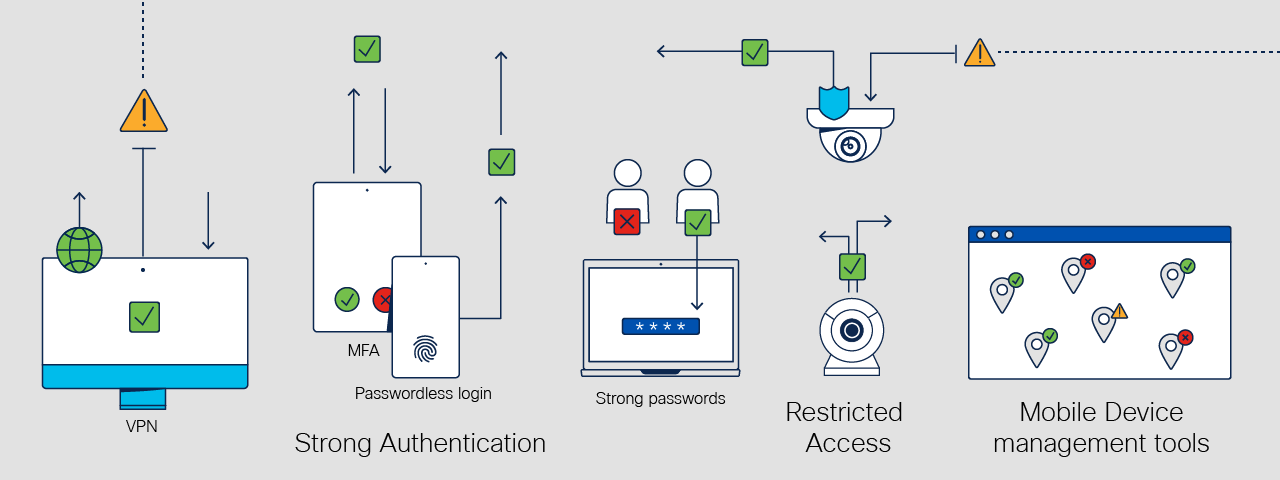What are common types of device security?
Endpoint security
Endpoint security solutions protect devices from cybersecurity threats. These solutions protect devices from malware, unauthorized access, and data theft through threat hunting, incident management, and device visibility features.
Secure your endpoints
Data security
Data security works to protect digital information from unauthorized access. Data security tools like encryption, access controls, and firewalls help ensure information privacy, integrity, and availability.
Protect your data
Network security
Network security is the protection of the networking infrastructure from unauthorized access, misuse, and theft. It establishes a secure environment for devices, users, and applications. Secure access service edge (SASE) is a network security model that integrates security and WAN capabilities for safe device connectivity across distributed organizations
Explore Cisco SASE
Device trust
Device trust is a security strategy that assesses the trustworthiness of devices before granting access to corporate resource. Built on the principles of zero trust, verifying device trust helps ensure that only secure devices connect to a network, reducing the risk of vulnerability exploitation and data breaches.
Verify device trust
Cloud Access Security Broker (CASB)
A Cloud Access Security Broker (CASB) is a security solution that protects devices by providing visibility, control, and security for cloud-based applications and data. By extending security measures to the cloud infrastructure, a CASB safeguards devices accessing cloud-based applications and data.
Discover cloud security
Mobile device management (MDM)
Mobile device management, or MDM, is a monitoring and management practice designed to secure mobile devices such as smartphones and tablets. MDM solutions equip organizations to enforce security policies on mobile endpoints, control access to corporate data, and remotely wipe stolen devices.
Meet Meraki MDM
IoT security
IoT security focuses on protecting IoT devices from cyberthreats. It involves implementing strong authentication, encryption, and access controls to prevent unauthorized access and potential risks associated with IoT devices.
Learn about IoT security
Email security
Email security solutions protect devices from email-based cyberthreats like phishing attacks, spam, and malware. These solutions filter email content, attachments, and URLs to identify and block malicious content. Security features like encryption, data loss prevention, and advanced threat protection work to safeguard devices and corporate data.
Secure your emails

